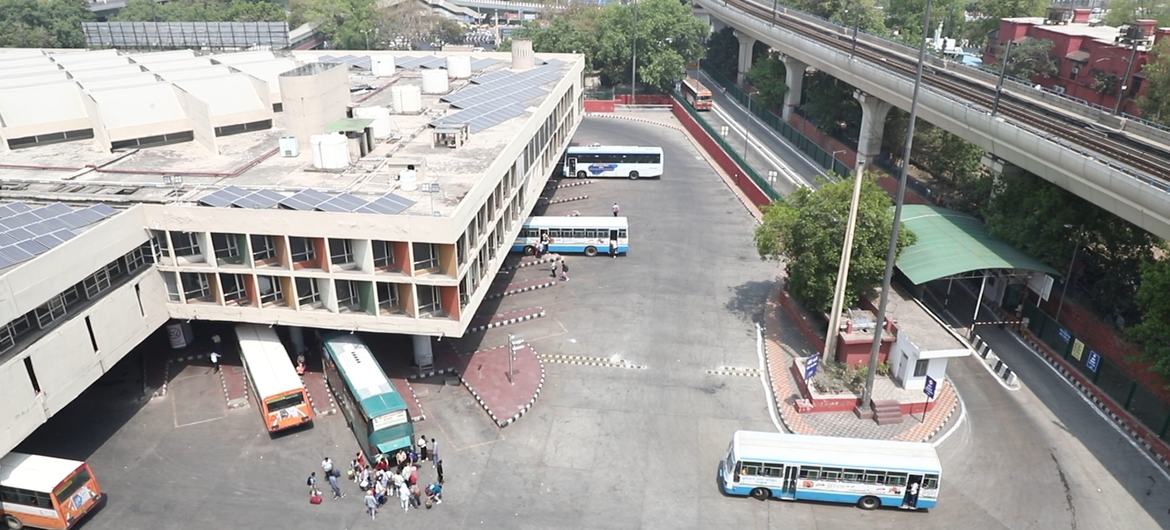Don't Miss Our Holiday offers - up to 50% OFF! & More..


India: For relief in hot summer, emphasis on the adoption of new and old measures – eSHOP24X7
In recent years, the effect of heat in India has been very serious: deaths due to high temperatures, heat wave news and the closure of schools has become common.
To protect against the side effects of heat, it is important that natural and environmental cooling measures be encouraged and the atmosphere cooled without electricity or machines.
Shaded trees, construction of the green site, reflecting cold floors and sunlight. The best urban and nature -based settlements are some solutions of this type so that temperatures can remain low in the house, construction or outside.
Balakrishna Pisupati, head of the Indian Office of the United Nations Environment Program (UNEP), says: “All countries should begin to reduce greenhouse gas emissions, even then extreme fluctuations at temperature will remain for a long time for a long time.”
“To deal with the level we are seeing, India people need measures that do not further increase the climatic crisis.”
He said this is the time when natural cooling techniques can become an important solution.
The “passive cooling” does not consume energy and, like air conditioning, these measures do not cause greenhouse gas emissions, which does not increase the additional climatic crisis.
India has emerged worldwide in the field of natural cooling, including these measures in national policies and urban planning, in many of which UNEP has provided significant support in many schemes.


Under the leadership of the UNP, a plan to convert the roof of the busy interstate bus stop of the Kashmir door in Delhi in a “cold roof” has begun.
Efforts to keep fresh roofs in Delhi
Delhi, the capital of India, is one of the most popular meters in the world. At the beginning of May of this year, the temperature here felt up to 50 ° C. Humidity caused people to suffer.
Under the initiative called “Cool Coalition” directed by the UNPP, the roof of the busy Kashmiri Gate of Delhi is becoming a “cold roof”.
This roof extends over 1.5 million square feet and will be covered with a surface that will reflect the solar heat of up to 80 percent, which is expected to relieve a Passenger Lakh every day.
This project, led by the support of the Swiss Development and Cooperation Agency, is part of the reduction of the impact of heat waves taking into account the security of Delhi’s weak sections.


In collaboration with UNEP, passive cooling measures are being added, such as natural ventilation and isolated walls, to the affordable housing scheme of the Indian government.
Cooling of houses built under social scheme
Under Pradhan Manthan Manthan Awas Yojana from India, PMAY, so far millions of families have been provided with safe and affordable houses. However, the relief of heat in these houses remains a great challenge.
The UNEP now encourages the rooms ventilated by natural measures in this scheme and placing that roof on the walls so that the freshness of the houses does not go out.
The Government aims to build a house of millions of rupees by 2029. By incorporating natural cooling measures, energy consumption can decrease by 35 percent, the internal temperature can be reduced to 3 ° C, so that people do not need cooling measures for a large period in a year.
In Tamil Nadu, the UNPP, together with several government agencies, is preparing these financial models, which facilitates the implementation of passive cooling in governmental houses.


The ‘Cold Coalition’ led by the update and government of the state of Tamil Nadu have developed measures to keep fresh roofs in the residential project affordable in Chennai.
Efforts to save Chennai from the effect of heat
Chennai is a great industrial city in southern India, which is affected by a horrible heat every year before the monsoon. Due to the lack of dense settlements, high buildings and green areas, people in this city with a population of 1.2 million rupees fight with the abrasing heat.
Under a UNEP initiative, collecting information about the most popular parts of the city (heat mapping: local authorities have been informed about how temperature can be reduced by natural elements and natural techniques.
These recommendations are now included in Chennai’s master plan, which can reduce temperature to 4 ° C and reduce heat caused by 15-30 percent.
The project has the support of the Swiss agency, the Denmark government, the clean cooling initiative and the World Bank.
Strengthen urban planning
There is still no standardized or scientific method of thermal mapping in most cities in India, which is necessary to plan to deal with heat.
To deal with this challenge, UNEP and partners, together with the central and state governments, are developing new strategies to identify the most popular areas of the city. In addition, such guidelines are being prepared, so that disaster relief funds can be used in temperature reduction projects.
The heat in Tamil Nadu has been declared an official disaster. With the support of UNEP, now the state government, schools, factories and government houses are dedicated to implementation by identifying passive cooling solutions.
This first article Here Published.







